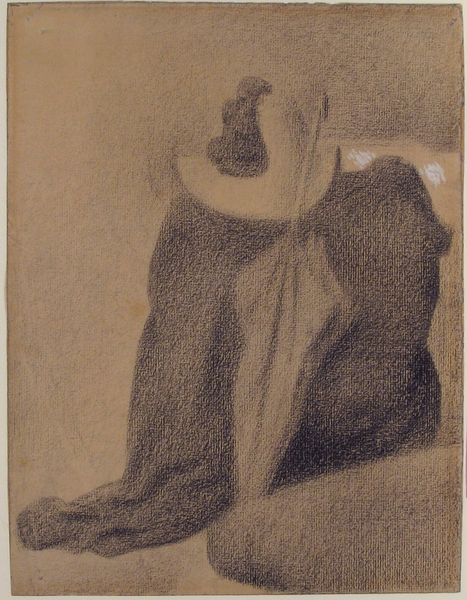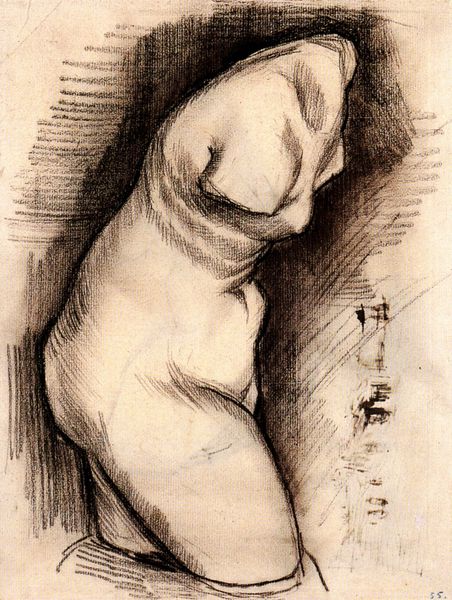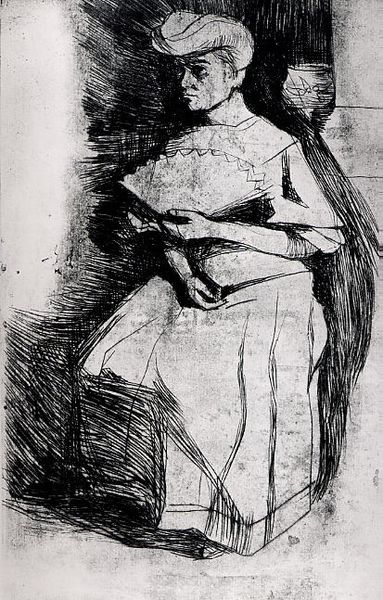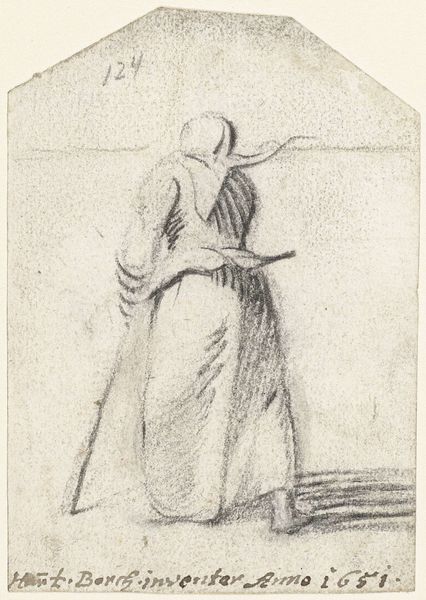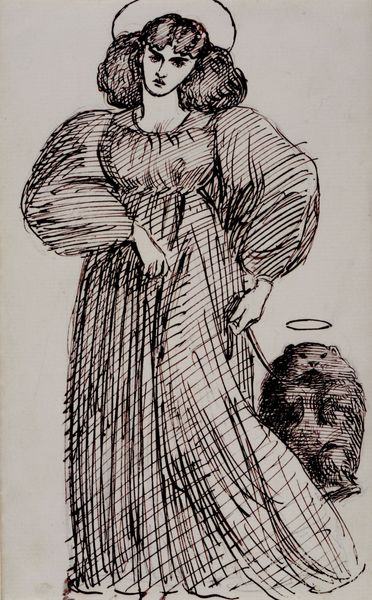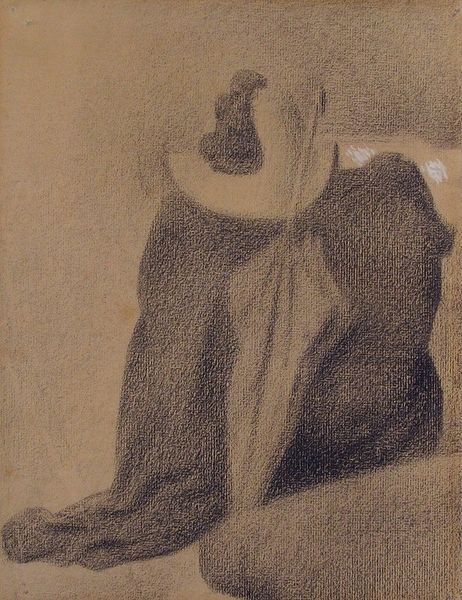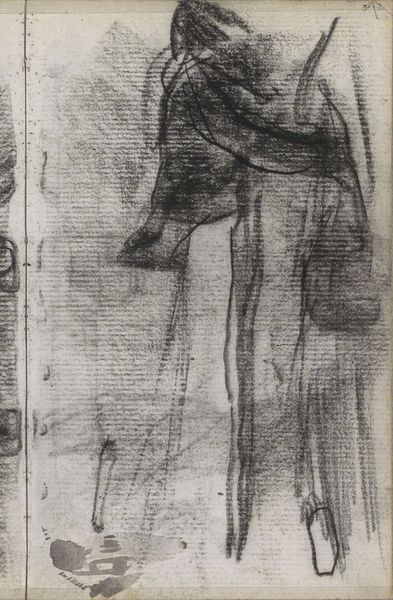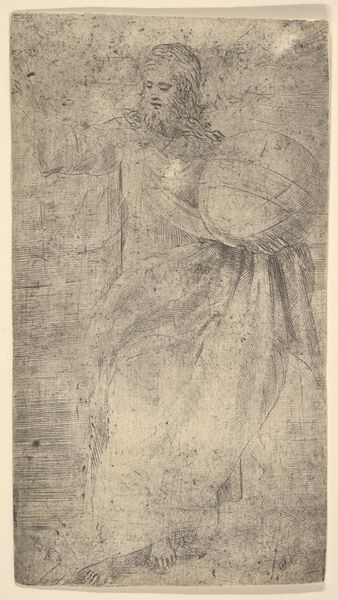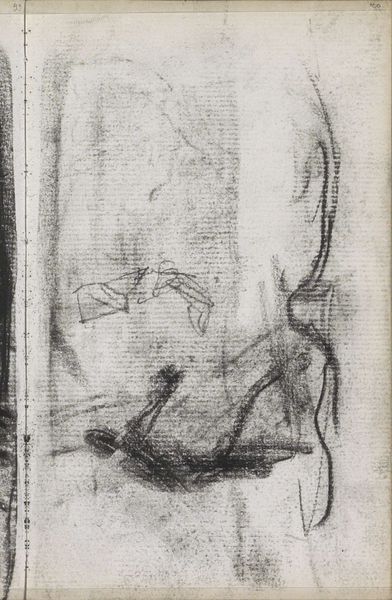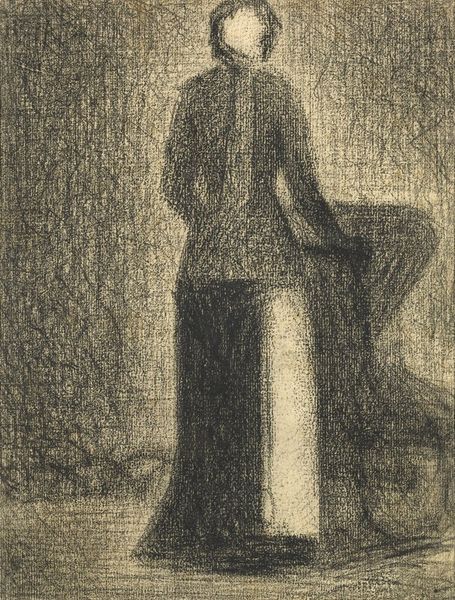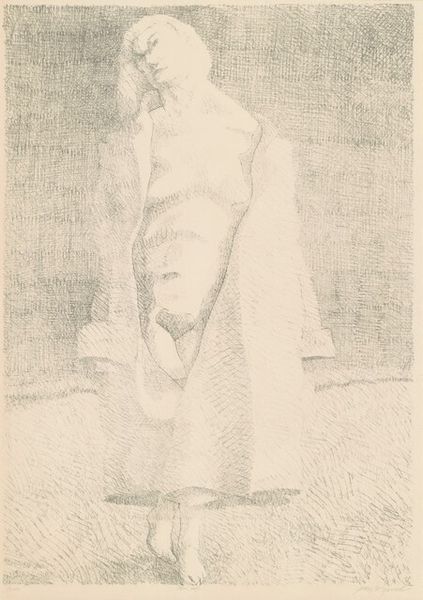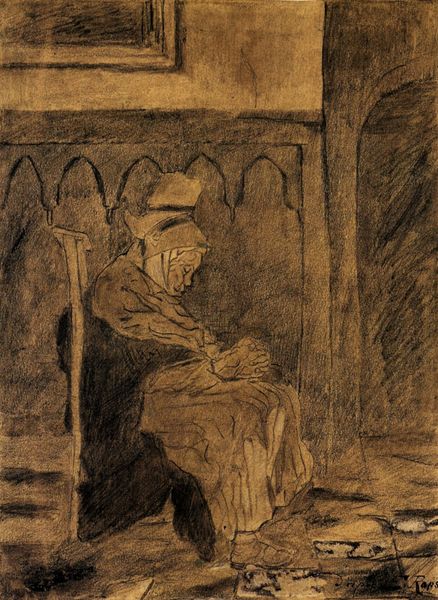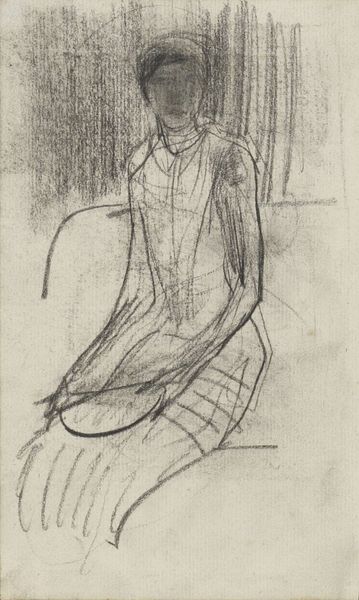
Copyright: Public domain
Editor: So, this is "Elizabeth Siddal Seated in a Chair," a drawing by Dante Gabriel Rossetti, done in pencil and charcoal around 1860. It feels incredibly intimate, almost like we're intruding on a very private moment. What strikes you when you look at it? Curator: The vulnerability, perhaps? Rossetti captures a quiet stillness, doesn’t he? The soft light from the candle seems to cocoon her. You almost feel you can hear her breathing, a gentle susurrus. There's a haunting quality to it. It's as if Rossetti is trying to preserve her, not just as an image, but as a presence. Do you get the sense she's at peace or merely resigned? Editor: I hadn't thought of resignation, but now that you mention it... Her eyes are closed, which could be peaceful, but maybe it's also a shutting out of the world? I was also thinking about how often Rossetti drew Siddal; she was clearly a muse. Does knowing that add another layer? Curator: Absolutely. This isn't just any sitter; it's his wife, his lover, his obsession. The lines are so tender, especially around her hands and face. It speaks to a profound connection, and perhaps a possessiveness too. The Pre-Raphaelites were fascinated by beauty and tragedy. Maybe here, he saw both intertwined. Almost like he sensed something about her fate, you know? Editor: Wow, that’s… intense. I was initially drawn in by the delicate technique, but hearing you talk about the relationship between Rossetti and Siddal makes the drawing much more complex. Curator: Isn't it marvelous how a simple drawing can hold so much? It's a testament to Rossetti's skill, yes, but also to the enduring power of art to capture the complexities of human emotion. I leave with more empathy. Editor: Totally. And I'm taking away a whole new way of seeing those "simple drawings." Thanks!
Comments
No comments
Be the first to comment and join the conversation on the ultimate creative platform.
